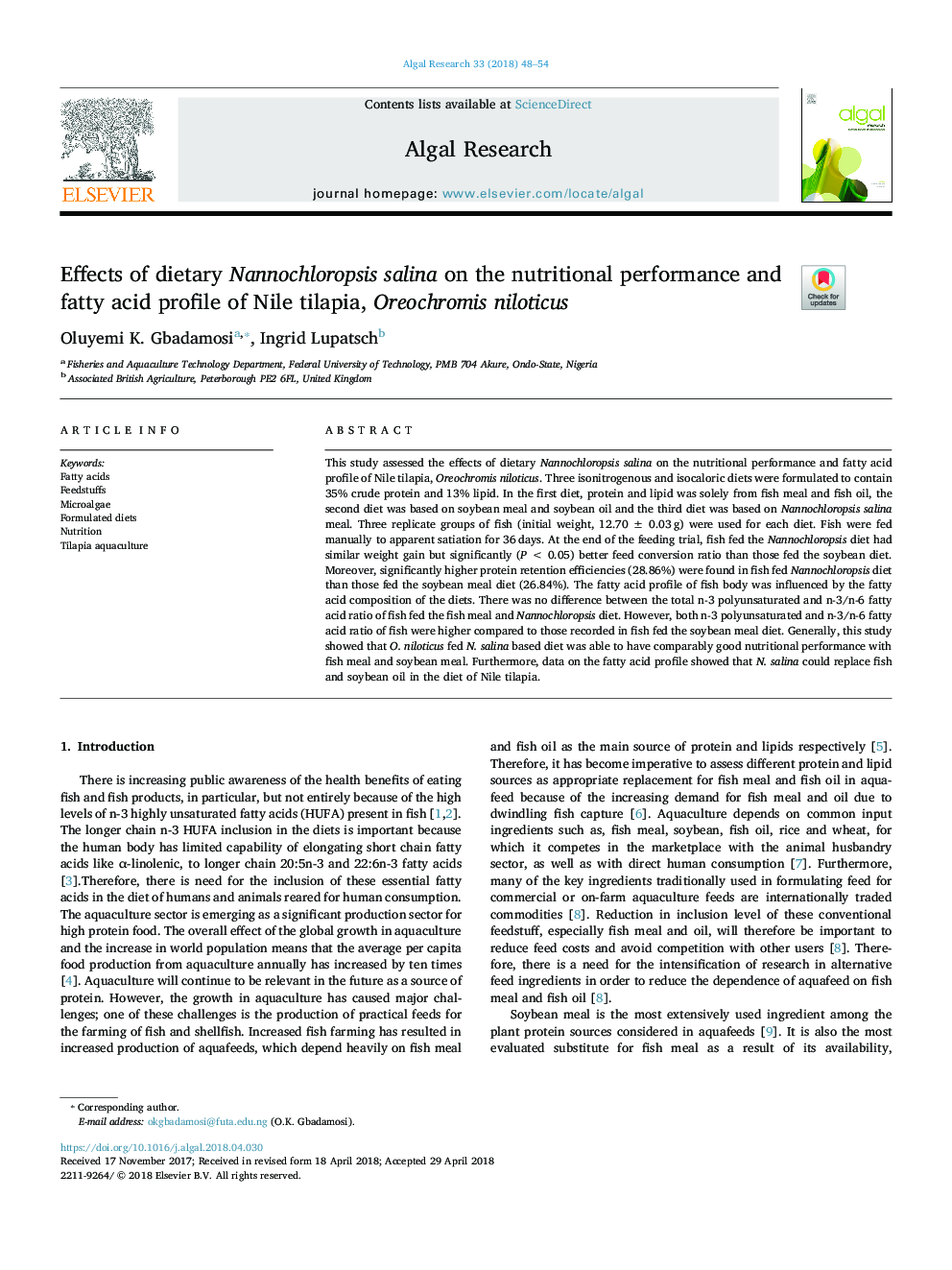| Article ID | Journal | Published Year | Pages | File Type |
|---|---|---|---|---|
| 8085850 | Algal Research | 2018 | 7 Pages |
Abstract
This study assessed the effects of dietary Nannochloropsis salina on the nutritional performance and fatty acid profile of Nile tilapia, Oreochromis niloticus. Three isonitrogenous and isocaloric diets were formulated to contain 35% crude protein and 13% lipid. In the first diet, protein and lipid was solely from fish meal and fish oil, the second diet was based on soybean meal and soybean oil and the third diet was based on Nannochloropsis salina meal. Three replicate groups of fish (initial weight, 12.70â¯Â±â¯0.03â¯g) were used for each diet. Fish were fed manually to apparent satiation for 36â¯days. At the end of the feeding trial, fish fed the Nannochloropsis diet had similar weight gain but significantly (Pâ¯<â¯0.05) better feed conversion ratio than those fed the soybean diet. Moreover, significantly higher protein retention efficiencies (28.86%) were found in fish fed Nannochloropsis diet than those fed the soybean meal diet (26.84%). The fatty acid profile of fish body was influenced by the fatty acid composition of the diets. There was no difference between the total n-3 polyunsaturated and n-3/n-6 fatty acid ratio of fish fed the fish meal and Nannochloropsis diet. However, both n-3 polyunsaturated and n-3/n-6 fatty acid ratio of fish were higher compared to those recorded in fish fed the soybean meal diet. Generally, this study showed that O. niloticus fed N. salina based diet was able to have comparably good nutritional performance with fish meal and soybean meal. Furthermore, data on the fatty acid profile showed that N. salina could replace fish and soybean oil in the diet of Nile tilapia.
Related Topics
Physical Sciences and Engineering
Energy
Renewable Energy, Sustainability and the Environment
Authors
Oluyemi K. Gbadamosi, Ingrid Lupatsch,
